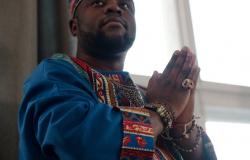
Humanitarians have recently championed faith actors as valuable resources in delivering humanitarian aid. Partnerships are increasingly promoted through international declarations and bespoke toolkits. Such approaches are abstracted from the historical and contemporary contexts through which faith is negotiated, and through which faith actors have become legitimate. This paper explores how faith has been entangled within the dynamics of two spatially connected crises: Ugandans fleeing post-Amin reprisals in the mid-1980s, and South Sudanese fleeing civil war from 2013. Drawing attention to the local-structural engagements which have shaped forms of protection and the legitimacy of faith actors, this paper urges for a consideration of complexity in humanitarians' localisation calculations.
Policy Implications
- Generalised tool-kits which seek to involve faith actors in humanitarian protection miss crucial local nuances. It is important to develop tools which reflect histories through which faith has been localised and negotiated in African borderlands (and other settings).
- Humanitarians often present faith as a coherent field, but it is rather a plural space, shaped by multiple actors representing diversity within and between denominations. It is important to develop protection approaches with consideration for this complexity. Most particularly, to promote inclusion, it is essential to involve multiple faith actors in the development of approaches to faith-based protection.
- Significant anthropological and historical literature has explored complex histories of faith in African (and other) contexts. This work should be considered as an evidence-base to inform emergent localised and faith-based protection agendas.
- Faith actors often occupy positions of vulnerability during war and conflict. It is essential that protection strategies extend support to faith actors on the frontlines of conflict.
Photo by Askar Abayev